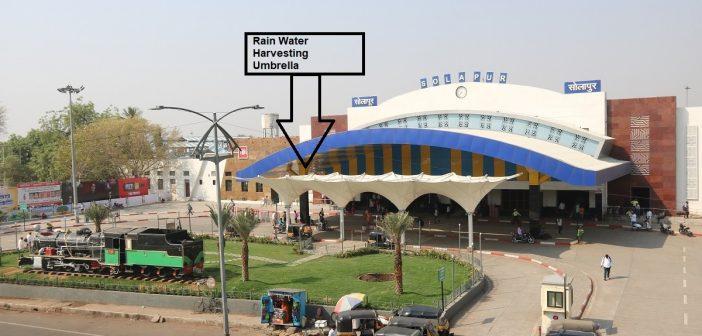Mumbai: CR Initiative of Water Conservation Through Rain Water Harvesting. The Central Railways (CR) Environment and House-keeping Management department has relentlessly worked to achieve environmental sustainability targets through various measures and Initiative. These measures undertaken in accordance with norms issued by Hon’ble National Green Tribunal (NGT) and Railway Board with respect to water conservation, renewable energy, waste management, development of green patches by afforestation etc.
To Promote water conservation, Central Railway has been providing Rain Water Harvesting (RWH) at various locations as a part of finding solution to ever-increasing water needs. Rapid urbanization resulting decrease in infiltration of rain water into the sub soil drastically, so also tube wells drilled are lowering water tables in most parts of the country. This problem gets further compounded in areas where rainfall is poor. To overcome this problem Central Railway has taken initiative in Rain water Harvesting and provided 158 RWH units at various locations such as stations, workshops, colonies etc. in its jurisdiction including 24 RWH units provided in the year 2021.
Most of these Rain Water Harvesting units are provided in drought prone areas of Bhusaval and Solapur Division where rainfall is poor. Out of these 158 RWH units 73 units were provided to the Bhusaval Division followed by Solapur Division with 52 RWH units. Nagpur Division provided with 19 RWH units, Pune Division 8 RWH units and Mumbai Division with 6 RWH units (2 each at Matunga Workshop, CSMT and Lonavala)
In addition, Central Railway has provided 6 Solar Umbrellas with Rain Water Harvesting on Mumbai Division i.e., 2 each at Chhatrapati Shivaji Maharaj Terminus, and Lonavala, one each at Igatpuri and Lokmanya Tilak Terminus.
These initiatives of water conservation will help us in saving the consumption of fresh water.
Benefits of Rain Water Harvesting
* Conservation of rain water
* Improvement in infiltration and reduction in run-off thereby reducing flooding and water logging during the rainy season
* Increasing the water table of surrounding area and recharging ground water with fresh water
* Improving the ground water quality by reducing the salt content, making it potable for drinking and other use like gardening, cleaning, washing etc.
* Preventing erosion of soil



